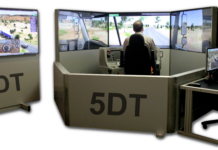According to a market analysis by Rory Schulz, marketing director of UD Trucks Southern Africa, the commercial vehicle market is expected to grow marginally during 2017, his forecast being 28 998 units.
He says a slight increase in GDP is expected, along with more investment by companies in new assets. On the downside, ongoing political tension, the risk of lower credit ratings and an expected increase in tax rates – all of which erode purchasing power – contribute to the lack of market stimulation.
In relation to the latest results published by the National Association of Automobile Manufacturers of South Africa (NAAMSA), 2016 truck sales were down by 11,4% to 27 010 units compared to results recorded in 2015.
“This is the lowest local sales total for commercial vehicles in five years,” says Schulz. “This can mainly be attributed to a slow economy, a lack of business confidence and struggling commodity prices.”
Busses were the only segment that ended 2016 in the green, with a year-on-year growth of 14% to 1 276 units. Schulz says this performance resulted from several large orders received.
Sales in the Medium Commercial Vehicle (MCV) segment were down by 18,9% to 8 432 units, while the Heavy Commercial Vehicle (HCV) segment concluded the year on 5 452 units – a 3,8% decline on 2015’s results. The Extra Heavy Commercial Vehicle (EHCV) segment declined by 10,8% to 11 850 units.
Schulz says that in order for the truck industry to grow and prosper, a re-ignition of the South African economy is needed. “While other countries in the region are racing to construct roads, ports, power stations and hospitals, South Africa clearly lacks the political and economic drive to fast-track sustainable development.”
He says a consolidated road freight industry is also needed to help drive reform and advancement in the transport sector, as well as in the larger economy. “Trucks touch every facet of society and are key drivers of economic development, from construction to long-haul transport of commodities, cold chain logistics and utilities.
“Businesses therefore have to be enabled by government to succeed through a balance of regulations and costs of operations,” he maintains.















